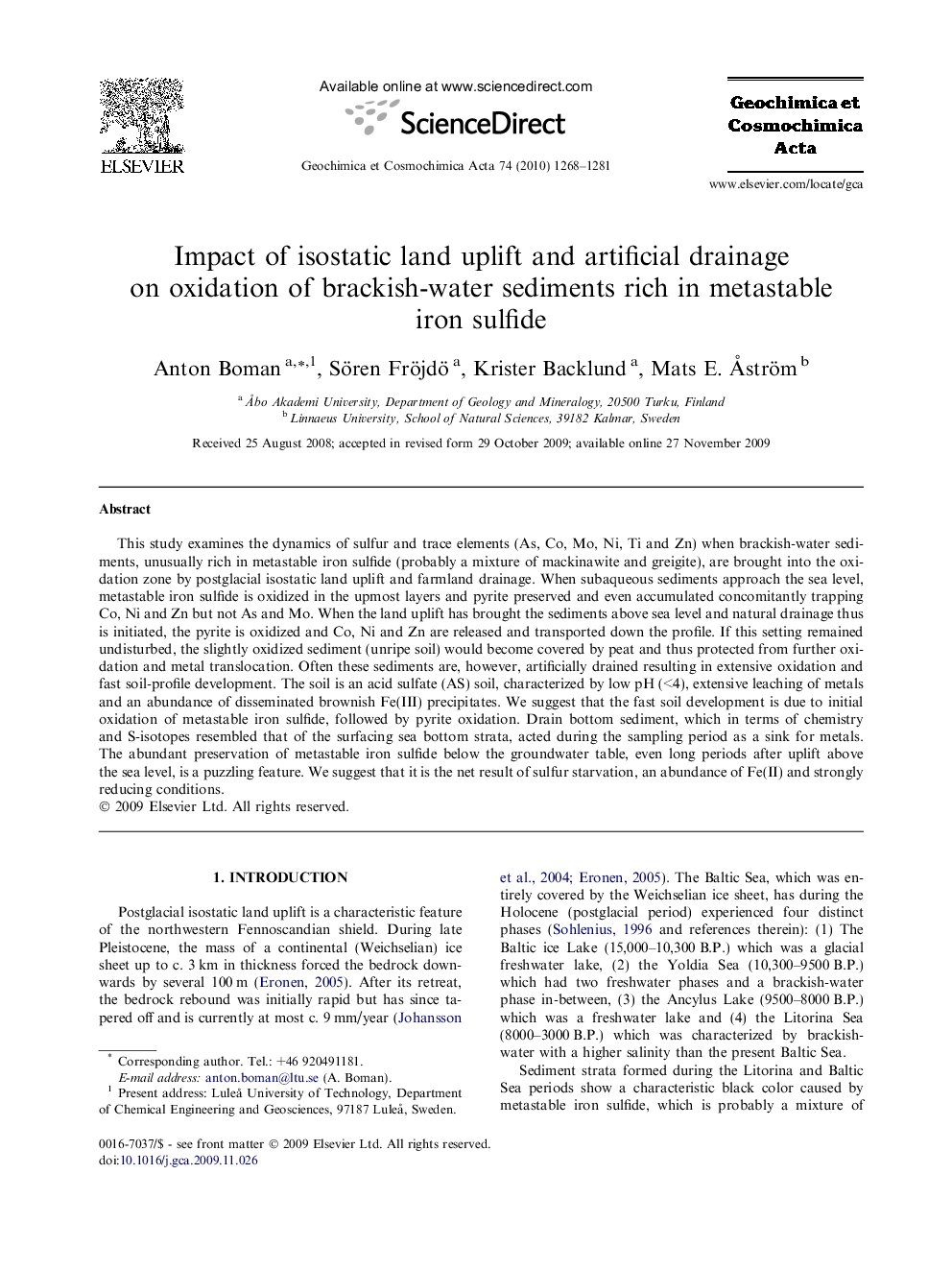| کد مقاله | کد نشریه | سال انتشار | مقاله انگلیسی | نسخه تمام متن |
|---|---|---|---|---|
| 4703744 | 1352878 | 2010 | 14 صفحه PDF | دانلود رایگان |

This study examines the dynamics of sulfur and trace elements (As, Co, Mo, Ni, Ti and Zn) when brackish-water sediments, unusually rich in metastable iron sulfide (probably a mixture of mackinawite and greigite), are brought into the oxidation zone by postglacial isostatic land uplift and farmland drainage. When subaqueous sediments approach the sea level, metastable iron sulfide is oxidized in the upmost layers and pyrite preserved and even accumulated concomitantly trapping Co, Ni and Zn but not As and Mo. When the land uplift has brought the sediments above sea level and natural drainage thus is initiated, the pyrite is oxidized and Co, Ni and Zn are released and transported down the profile. If this setting remained undisturbed, the slightly oxidized sediment (unripe soil) would become covered by peat and thus protected from further oxidation and metal translocation. Often these sediments are, however, artificially drained resulting in extensive oxidation and fast soil-profile development. The soil is an acid sulfate (AS) soil, characterized by low pH (<4), extensive leaching of metals and an abundance of disseminated brownish Fe(III) precipitates. We suggest that the fast soil development is due to initial oxidation of metastable iron sulfide, followed by pyrite oxidation. Drain bottom sediment, which in terms of chemistry and S-isotopes resembled that of the surfacing sea bottom strata, acted during the sampling period as a sink for metals. The abundant preservation of metastable iron sulfide below the groundwater table, even long periods after uplift above the sea level, is a puzzling feature. We suggest that it is the net result of sulfur starvation, an abundance of Fe(II) and strongly reducing conditions.
Journal: Geochimica et Cosmochimica Acta - Volume 74, Issue 4, 15 February 2010, Pages 1268–1281